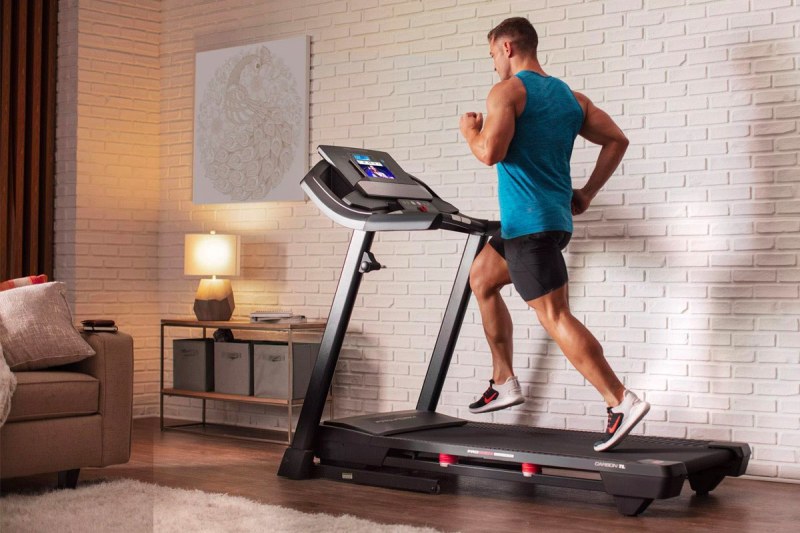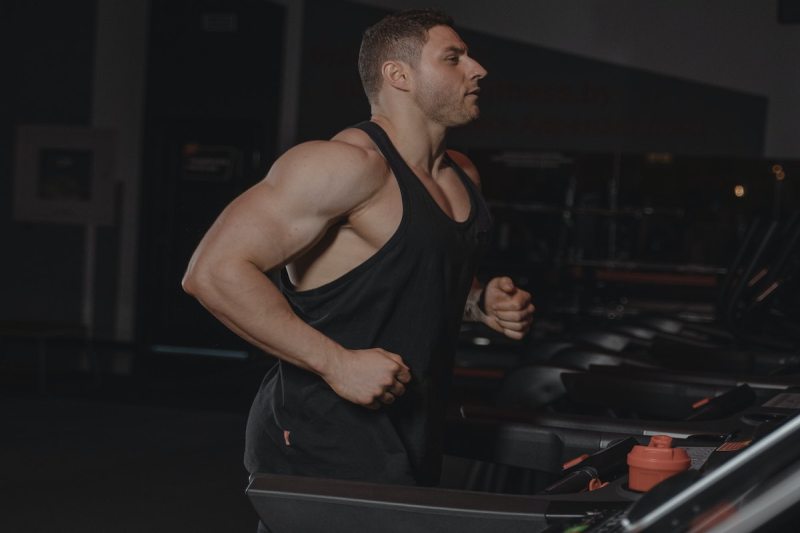When it comes to treadmill running vs. outside running, everyone has an opinion. Both options come with their own set of pros and cons. Most runners like one over the other but see value in both, depending on a host of different factors.
Running is a great way to stay in shape and get some exercise, no matter where you choose to do it. There is no right or wrong answer to where you should run, whether that’s outside or on a treadmill, as long as you get it done and enjoy yourself in the process.
What is it like running on a treadmill compared to running outdoors? Is one more difficult than the other? While runners might say one is best, scientific research shows that treadmill running is equivalent to outside running most of the time. Let’s find out which one might be best for you.
What are the benefits of running?

As a rule, running is an aerobic exercise that helps you stay in shape and keep your weight down. Running also does the following:
Reduces stress levels
People think of yoga and meditation for stress reduction, but running also works in this regard. It requires a type of mindful meditation because you have to be present to run. You also focus on your breath, inhaling and exhaling as you go, which causes stress reduction.
You can repeat mantras, count breaths, and observe your surroundings. This simple routine helps you separate yourself from whatever is stressing you out. You can even benefit from this if you’re listening to a playlist or watching a movie on your phone.
Studies back up this claim, and long-time runners will tell you that it calms them in ways that also lessen their feelings of sadness and depression. While running, your body is stretching and releasing endorphins that make you feel good. New brain cells grow that stimulate stronger self-confidence, power, and security.
Helps your heart
Running will benefit your cardiovascular system and lower your risk for heart attacks and strokes. As an aerobic exercise, running uses excess fatty acids and carbohydrates for energy, which in turn helps strengthen your heart. As a result, runners will typically enjoy a slower resting heart rate and higher oxygen absorption.
A runner’s heart is often more defined with thicker left ventricles compared to non-runners or more sedentary people. These healthy hearts also pump a larger amount of blood per heartbeat, which gets more blood to the rest of the body and improves the circulatory system.
Strengthens your joints
Running helps strengthen your bones and cartilage. This reduces the risk of injury as well as chronic diseases like osteoarthritis. This is even true for runners who enjoy running long distances.
Runners are 50% less likely to develop knee osteoarthritis compared to walkers or swimmers. This is because when your feet land on the ground during a run, your bones and cartilage get stressed like muscles. This stress causes them to spring back faster, and that’s how they get stronger.
Acts as a great workout
Unfortunately, inactivity comes with a hefty price tag. Weight gain and obesity rates skyrocket, and the body’s metabolic rate gets slower. A slow metabolic rate burns fewer calories, and this only makes weight problems worse. More food gets stored in the body as fat, meaning people gain more and more weight.
Running can help because it speeds up the body’s metabolic rate. You’ll burn more calories and increase the probability that you’ll lose weight.
Some areas of the body that get a good workout during a run include the following:
- Abdominal muscles
- Shoulders
- Legs
- External obliques
- Trunk muscles
- Middle and lower back
Running helps to stabilize the spine and manage the energy transfer between the legs and the swinging arms. It’s also an effective way to lose or maintain weight. An average person who weighs about 120 pounds burns a little more than 11 calories per minute while running a 10-minute mile on flat ground.
That number can go up or down depending on how much the runner weighs, if they’re running up or down a hill, and whether the wind is with or against them.
Is running indoors or outdoors better?

- Running on the treadmill isn’t dependent on the weather, while running outside in the snow, rain, or during heavy winds can get tricky.
- Running on the treadmill helps you simulate race conditions, while running outside means you’re constrained to your environment.
- Running on the treadmill can be rather monotonous and boring, while running outside gives you lots of different sights to enjoy.
- Running on the treadmill means you can’t make turns, while running outside allows you to work on and improve your lateral agility.
- Running on the treadmill means you can run by yourself and feel safe no matter the time of day, while running outside late at night or early in the morning isn’t always as secure.
- Running on treadmills costs money, either through purchasing the machine or joining a gym, while running outside is free.
- Running on the treadmill is safer due to the lack of car traffic or cracks in the sidewalk, while running outside means a greater risk of injury.
- Running on the treadmill gives you more control over conditions like hills, while running outside burns more calories.
What factors do you need to consider?

What is your main goal? If your priority is to lose a particular amount of weight or get in better shape, a treadmill might be a great investment. If you want to focus on race training or improving your time, you will benefit more from running outside.
You should also consider which would be more enjoyable for you: Running inside or outside. Many communities have running groups with people of all ages and races. For some, that community means a lot, as runners come together every week and run while catching up with each other.
If you’re having fun, you’re more likely to commit to running as a sustainable lifestyle. You may even want to combine the two, using a treadmill from time to time and running outside when you can.
Running outside vs. treadmill

There are charms and challenges, whether you’re running outside or running on a treadmill.
For pure weight loss and cardiovascular benefits, you can use a treadmill and enjoy watching movies and listening to music to alleviate the monotony. If you’re training for a race or want to enjoy nature, variety, or a community of fellow runners, you will benefit more from running outside.
At the end of the day, pick the method of running that will be most enjoyable for you. You want an effective way to get or stay healthy, so it benefits you to choose a method that gets you most excited and engaged. No need to limit your running routine to only one approach. Just have fun and enjoy the experience!
Editors' Recommendations
- This one simple healthy food trick may get you to eat better more often
- Is walking at a treadmill desk really that helpful? We investigate
- Does the stationary bike or treadmill provide a better workout?
- Are stationary bikes or spin bikes better for reaching your goals?
- Pilates vs. yoga: Which is right for you?




